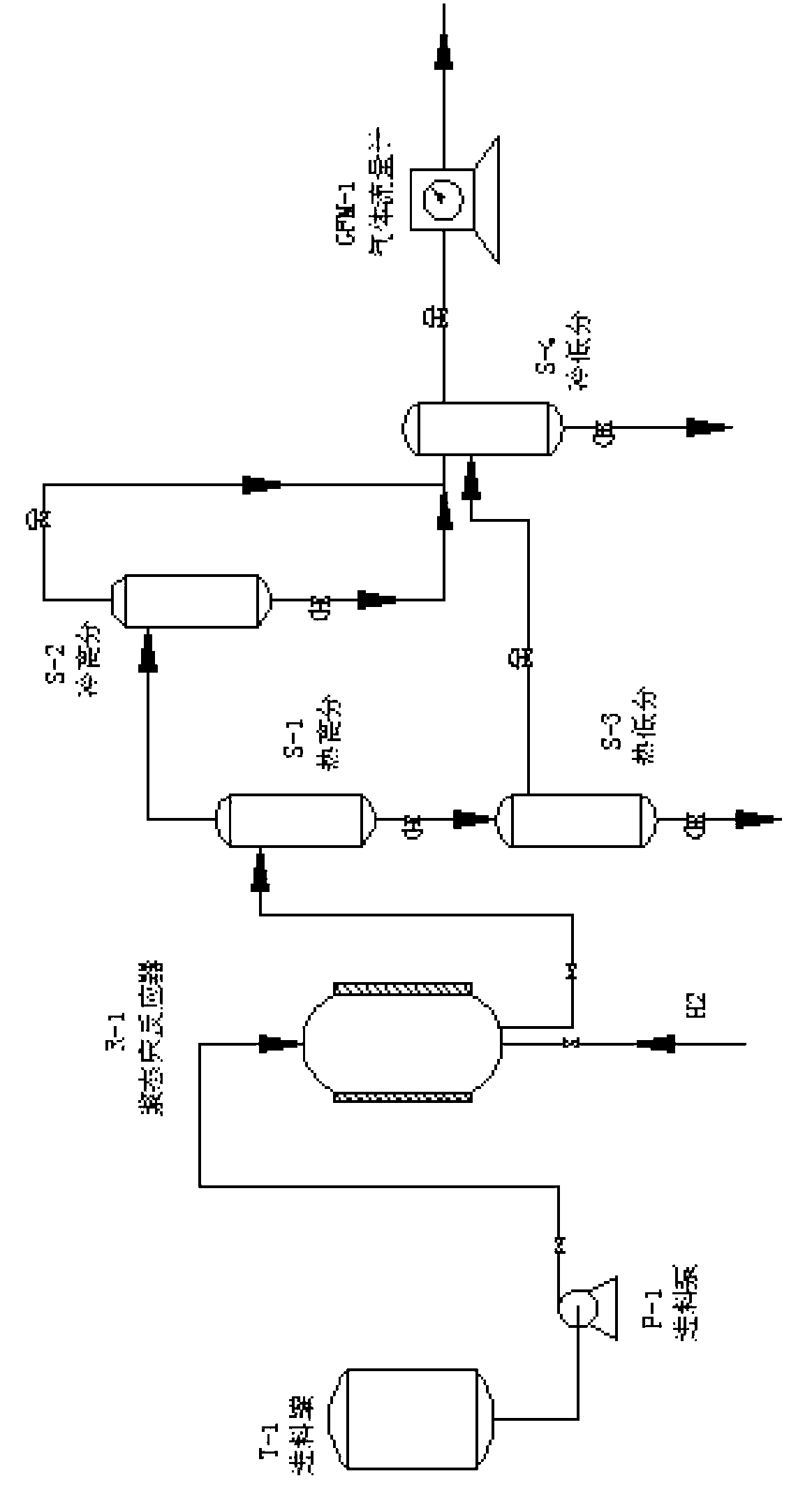Heavy oil and biomass hydrogenation coliquefaction treatment process
A biomass and co-liquefaction technology, applied in the petroleum industry, biofuels, hydrocarbon oil cracking, etc., can solve the problems of large coke production, bio-oil yield and quality that need to be further improved, and achieve strong coke capacity and promote The effect of high conversion rate and bio-oil yield, biomass conversion rate and bio-oil yield
- Summary
- Abstract
- Description
- Claims
- Application Information
AI Technical Summary
Problems solved by technology
Method used
Image
Examples
Embodiment 1
[0021] Example 1: Mix pine wood chips with a particle size of 40 to 100 meshes and Karamay vacuum distillate oil with a distillation range of 360 to 540°C in a mass ratio of 10% of pine wood chips as feed, control the reaction temperature to 410°C, and react hydrogen Pressure 5MPa, reaction volume space velocity 1.0h -1 , the ratio of hydrogen to oil is 400, the amount of catalyst added is 300ppm, and the amount of vulcanizing agent added is 0.1%. The slurry bed hydrogenation co-liquefaction experiment is carried out on the reaction materials, and the reaction products are fractionated to obtain liquid bio-oil and coke.
Embodiment 2
[0022] Example 2: Mix straw with a particle size of 40-100 mesh and Karamay vacuum distillate oil with a distillation range of 360-540°C at a mass ratio of 10% of pine wood chips as a feed, control the reaction temperature to 430°C, and the reaction hydrogen partial pressure 5MPa, the reaction volume space velocity is 1.0h -1 , the ratio of hydrogen to oil is 400, the amount of catalyst added is 300ppm, and the amount of vulcanizing agent added is 0.1%. The slurry bed hydrogenation co-liquefaction experiment is carried out on the reaction materials, and the reaction products are fractionated to obtain liquid bio-oil and coke.
Embodiment 3
[0023] Example 3: Mix pine wood chips with a particle size of 40 to 100 meshes and FCC oil slurry at a mass ratio of 15% of pine wood chips as a feed, control the reaction temperature to 430°C, the reaction hydrogen partial pressure to 8MPa, and the reaction volume space velocity to 1.0h -1 , the ratio of hydrogen to oil is 400, the amount of catalyst added is 300ppm, and the amount of vulcanizing agent added is 0.1%. The slurry bed hydrogenation co-liquefaction experiment is carried out on the reaction materials, and the reaction products are fractionated to obtain liquid bio-oil and coke.
PUM
| Property | Measurement | Unit |
|---|---|---|
| Particle size | aaaaa | aaaaa |
Abstract
Description
Claims
Application Information
 Login to View More
Login to View More - R&D
- Intellectual Property
- Life Sciences
- Materials
- Tech Scout
- Unparalleled Data Quality
- Higher Quality Content
- 60% Fewer Hallucinations
Browse by: Latest US Patents, China's latest patents, Technical Efficacy Thesaurus, Application Domain, Technology Topic, Popular Technical Reports.
© 2025 PatSnap. All rights reserved.Legal|Privacy policy|Modern Slavery Act Transparency Statement|Sitemap|About US| Contact US: help@patsnap.com


